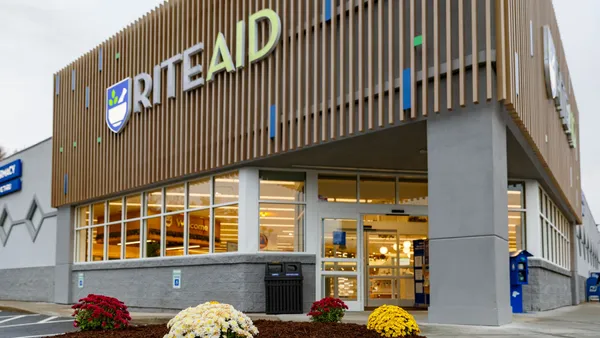Dive Brief:
- For the second time in less than three years, Payless ShoeSource has exited bankruptcy with plans to refocus its business. It also has a new management team with Jared Margolis, previously president of licensing group CAA-GBG, leading the company as CEO, according to a press release.
- In its current incarnation, the shoe retailer has a store footprint spread across Latin America, Southeast Asia and the Middle East, after liquidating all its stores in the U.S., Canada and Puerto Rico last year. Justo Fuentes, former president of BATA Latin America, will serve as head of Payless' Latin American business, its largest unit with more than 1,000 stores.
- Margolis said in the release that the reorganized company's "biggest growth opportunity" was the United States.
Dive Insight:
Some of the main threads of the current period of consolidation in retail can be told through the story of Payless.
After underperforming for years, it was taken private in 2012 through a leveraged buyout by Golden Gate Capital. The company was laden with debt when the market shifted, quickly. Payless was caught flat footed, without the financial resources to turn around its business fast enough. In 2017, it filed for bankruptcy for the first time.
"We just got caught in some really treacherous circumstances," former Payless CEO W. Paul Jones told Retail Dive in 2018. He described an environment where e-commerce grew more rapidly than anyone in retail expected. "The predictability of the business was so much greater than this past seven-to-10- year period," he added. "In today's day and age, you can't take the risk, because no one knows what the next curve ball is going to be."
Payless would exit Chapter 11 in a matter of months, with fewer stores, less debt and ownership turned over to lenders. Executives told Retail Dive at the time that the shoe retailer was retooling its marketing to reach more customers through digital channels as well as adding buy online, pickup in-store and ship-to-home capabilities. Several analysts at the time thought the retailer had a decent chance at a turnaround, given its value pricing and unique products.
Less than two years later, Payless was back in bankruptcy, this time with plans to liquidate in the U.S., making it the largest retail liquidation in history by store count. Its omnichannel improvements only made it to a couple hundred stores, while disruption with a supplier and its computer systems created merchandising problems throughout the business.
The company itself acknowledged, "Unfortunately, we emerged from the prior reorganization ill-equipped to survive in today's retail environment, with too much remaining debt, too large a store footprint and a yet-to-be realized systems and corporate overhead structure consolidation."
And here the company is, again, emerging from bankruptcy, with new leadership and renewed optimism around its prospects. The company said it "plans to collaborate with high-profile individuals and brands to ensure exclusive product offerings at a compelling price-point for its loyal base" and is "considering new technologies to streamline and optimize the customer experience." All good things, if the company has the capital to do them.
Margolis said the company would rely on its product development infrastructure and manufacturer relationships "to be nimble, innovative, and to fast-track our biggest growth opportunity: The United States." Given that Payless has no store or e-commerce presence in the U.S. (though it does sell on Amazon) it does present a growth market for the company.















